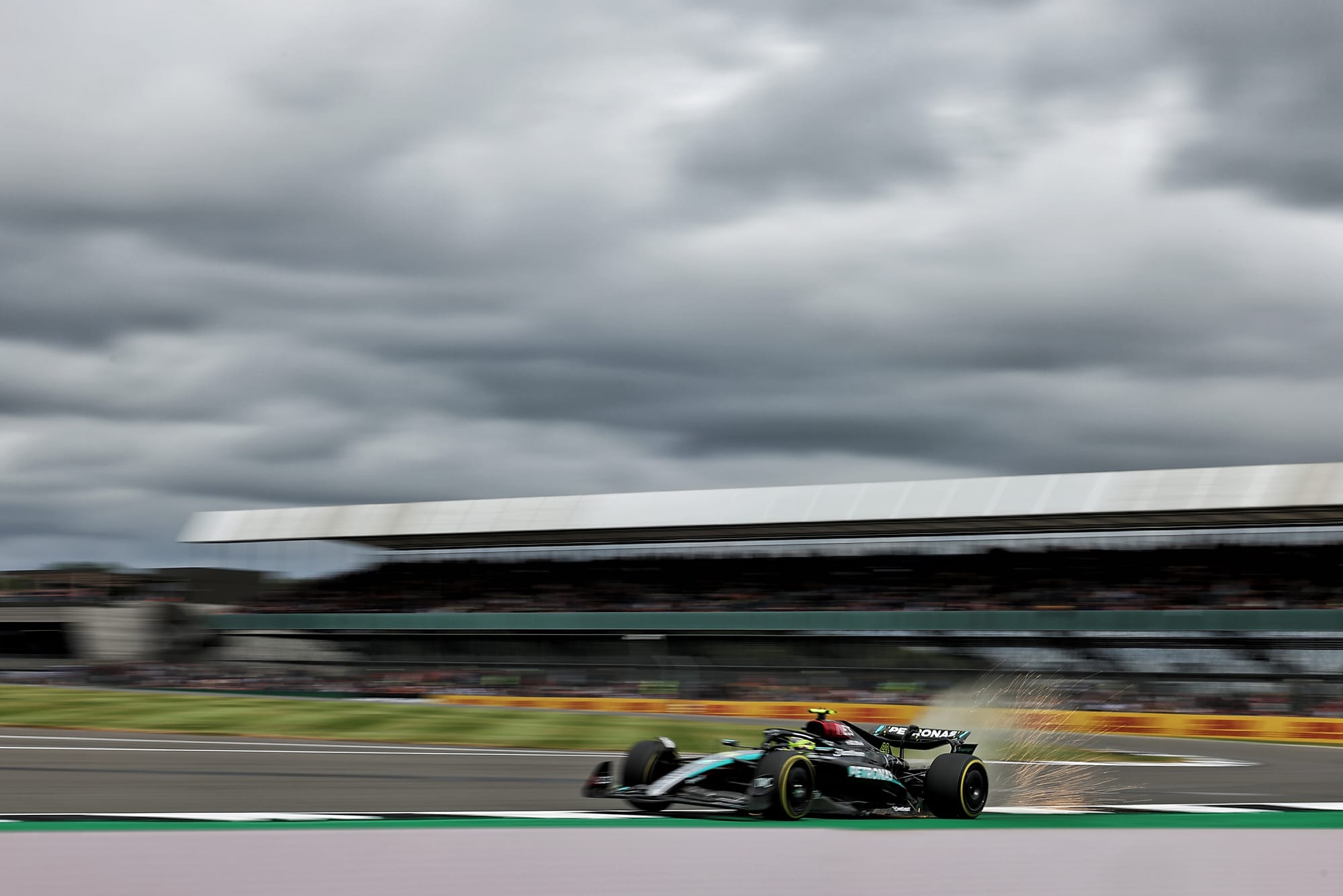Ferrari knew the British Grand Prix weekend would be difficult given Silverstone is a track Carlos Sainz called “the king of the high-speed”.
But more than just exposing a weakness in the fast stuff in terms of performance, the fact Ferrari reverted to the old specification of floor and bodywork that was used prior to last month’s Barcelona upgrade demonstrates how big a bouncing problem it’s battling with its 2024 Formula 1 car.
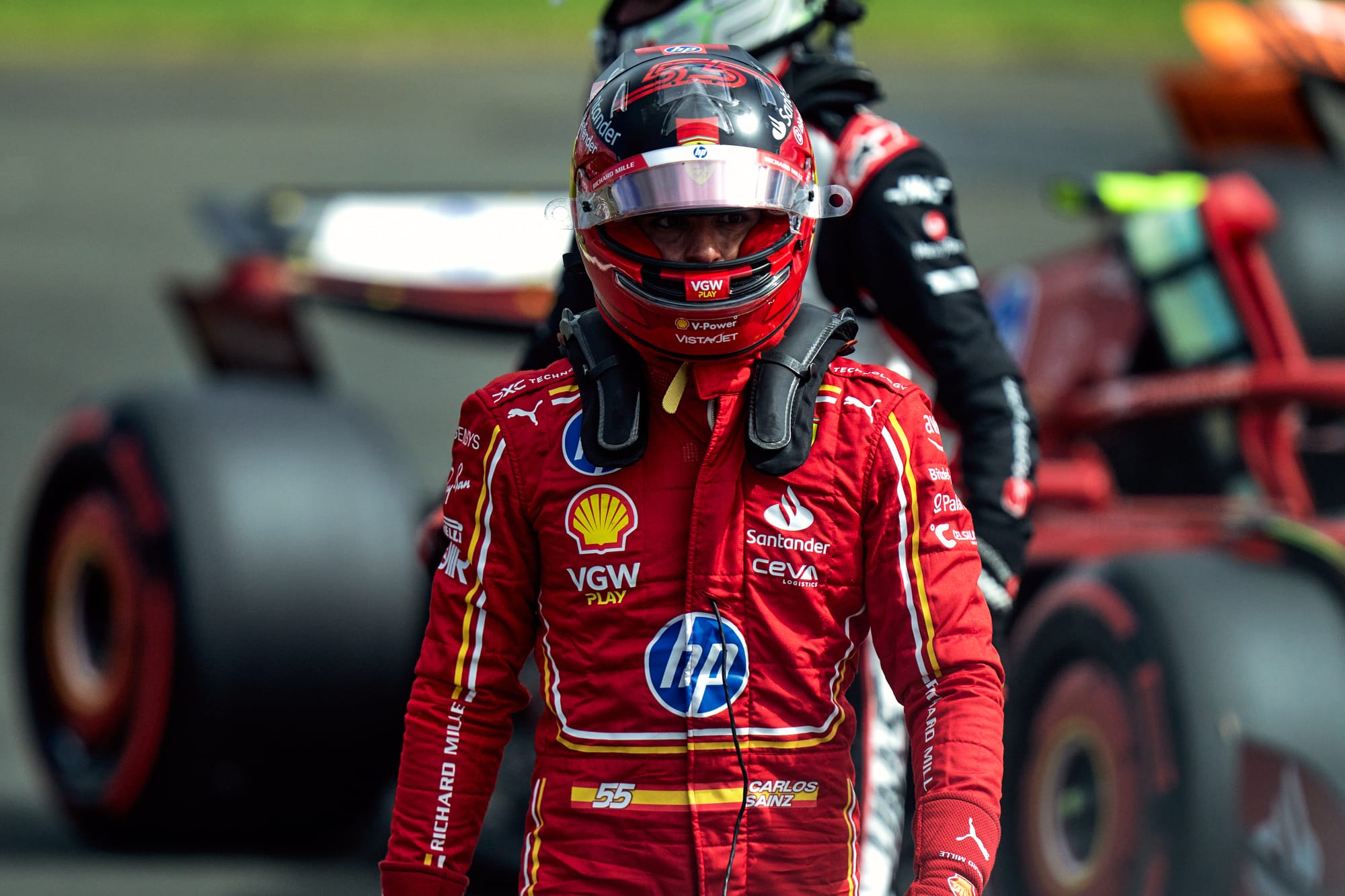
Sainz qualified seventh, half a second off George Russell’s pole position time, while Charles Leclerc missed out on a place in Q3 in 11th. And although Sainz admitted “we didn’t maximise everything” given the outlap for his final Q3 run was compromised by jostling with Oscar Piastri and Fernando Alonso, and Leclerc complained of understeer thanks to his front-left tyre being “out of the window”, even a perfect qualifying session wouldn’t have changed the picture. The Ferrari was very much fourth-best.
The back-to-back experiments during Friday practice, with Leclerc running the latest specification and Sainz the configuration that Ferrari had previously, weren’t just about deciding which was better for Silverstone. Leclerc believes that it will have given Ferrari the understanding it requires to tackle the excessive bouncing the car suffers from in high-speed corners.
“We've lost some performance since Monaco, as a matter of fact, and we are looking into it; that's also why we are doing all these tests,” says Leclerc. “We came to the conclusion that it was the right choice to come back for this weekend mostly because of bouncing and we'll take the right decision for the future very soon.
“What we've done yesterday was very helpful to help us take the right decision going forward.”
The upgrade package is likely to return for Hungary in two weeks' time, although Ferrari has yet to commit to that or to what modifications may or may not be required.
Attempts were made to improve the situation for Silverstone, with Leclerc running a slightly stiffened floor in the hope this would eliminate its troubles. Given the package is apparently working as hoped at lower speed, there is a downforce and drag gain from the upgraded package so if the benefits can be hung onto and the bouncing eliminated there is theoretically performance there. The trouble is, that is much easier said than done.
That’s doubly so with Ferrari given that it’s not so much that the new package has introduced the bouncing problem as it’s exacerbating it. During qualifying at Silverstone, there were still moments where the Ferrari was visibly jumping. Leclerc describes the bouncing only as “a little bit better” with the specification run in qualifying. And Sainz says it’s been a problem all season.
“From the beginning of the year, we already had a bit of bouncing so it is still an intrinsic weakness,” says Sainz. “But the new one was clearly worse than the old one on Silverstone.”
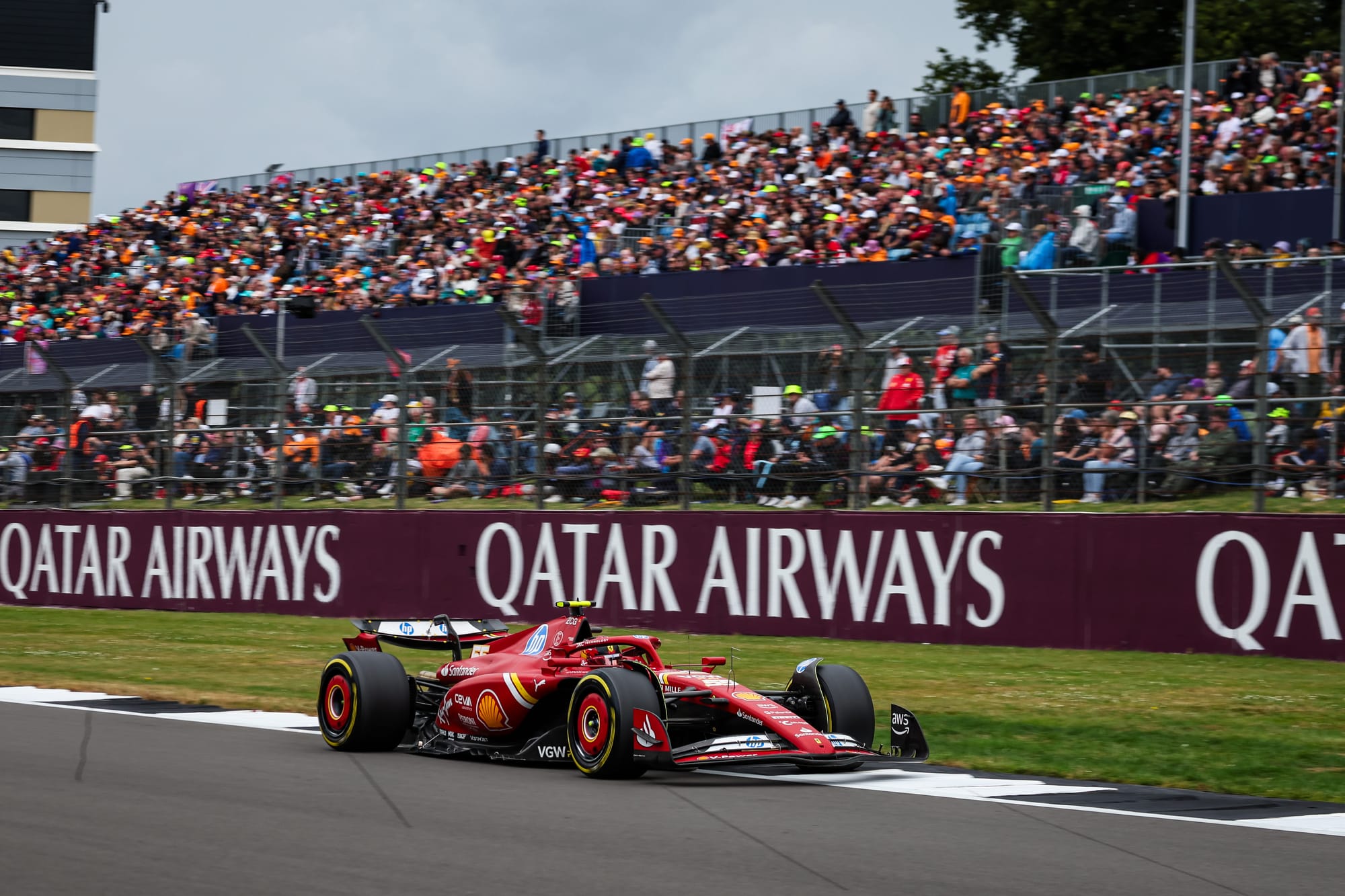
The switch to the old package also sacrificed a little performance given it was to make the car more predictable. As Sainz says, “we know it’s not faster, but it’s more driveable”. Watching Leclerc in action on Friday supports that statement emphatically.
With this generation of cars, adding downforce is relatively easy: simply get the floor closer to the ground. Mercedes, McLaren and Red Bull are ahead on this and are not hitting the serious bouncing problems that Ferrari is inducing. And simply living with it isn’t an option given it does also hurt laptime, and at times also works the tyres harder.
It's never positive when a team rolls back on an upgrade, but this is particularly concerning for Ferrari. After all, the team characterised the Spanish GP upgrade as building on the previous one introduced at Imola rather than any real change of direction. Given the package has exacerbated, rather than created, a problem the fix might not be a straightforward one, or quick.
GARY ANDERSON'S VIEW
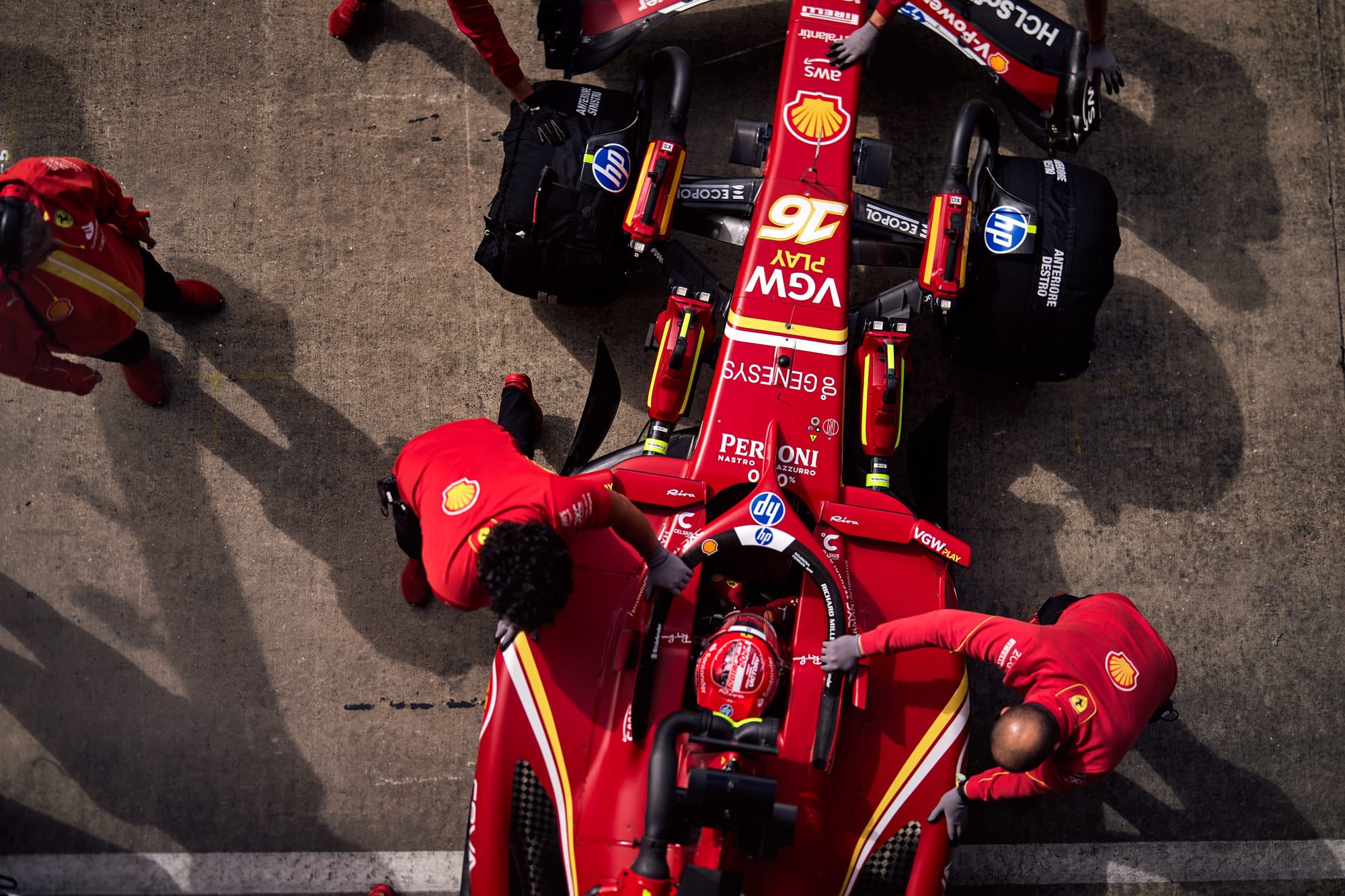
Since the dominant victory in Monaco, Ferrari has struggled with balance issues between low and high speed. It has pursued improving low-speed performance, which when you look back to the pace in Monaco seemed unnecessary. And as a result, it has introduced more bouncing. And that was something Ferrari was generally always on the cusp of triggering even before those developments.
The Barcelona upgrade that's been taken off the car included seven items, but we can set aside the circuit-specific rear wing and the tweaked halo fairing when it comes to this problem. But more significant will have been the changes to the floor and bodywork. In Ferrari’s Barcelona submission to the FIA, this is what it listed:
COKE/ENGINE COVER
Primary reason: performance - flow conditioning
Geometric change: increased sidepod / coke undercut
How it works: the new bodywork features a reworked undercut that improves flow quality over the floor edge and towards the back of the car.
FLOOR FENCES
Primary reason: performance - flow conditioning
Geometric change: redistributed floor fences camber
How it works: aim of redistributing front floor fence loading was to improve flow quality delivered to the rear floor/diffuser.
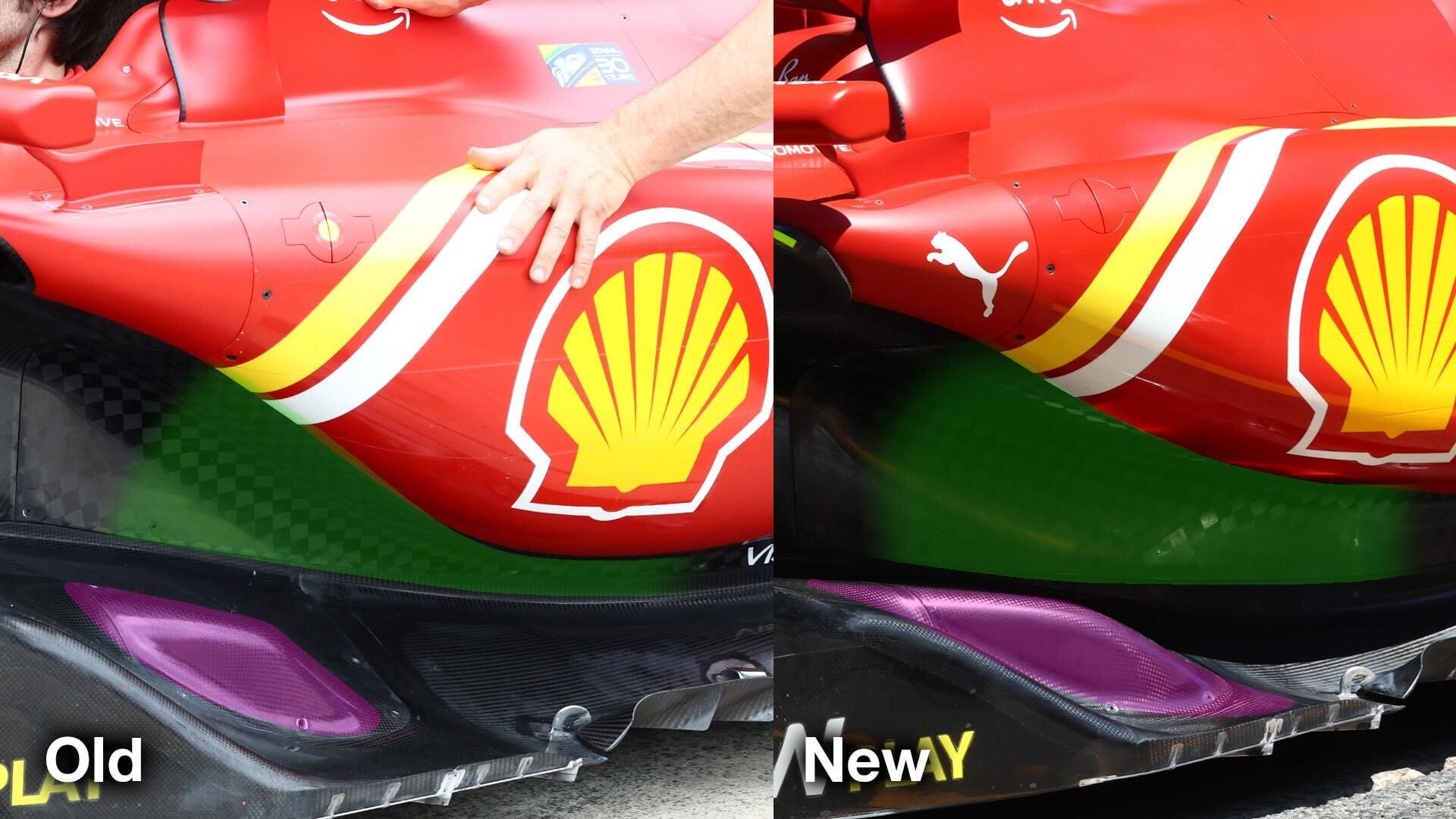
FLOOR BODY
Primary reason: performance - flow conditioning
Geometric change: lowered front floor roof
How it works: working in conjunction with the updated front floor fences arrangement, with the objective of improving flow quality towards the back of the car.
FLOOR EDGE
Primary reason: performance - local load
Geometric change: rearward floor edge volume increased
How it works: this minor geometrical update is an optimisation around the improved flow energy coming from upstream, returning local load gains whilst controlling the vorticity release in the diffuser.
DIFFUSER
Primary reasons: performance - local load
Geometric change: reworked diffuser / boat / keel expansion
How it works: benefitting from tidier upstream flow structures, the diffuser expansion, together with boat and keel volumes optimisation, has allowed to extract more local load gains.
These changes are all about increasing the downforce from the underfloor. As Ferrari admits, this has helped the car in the slower corners. That’s where the ride height is at its highest and that is critically important to overall laptime given it’s the slow turns that you spend the most time in.
However, you need to manage that increased underfloor downforce at high speed when the car is at a lower ride height. If not, it leads to bouncing - or in ‘old money’, porpoising.
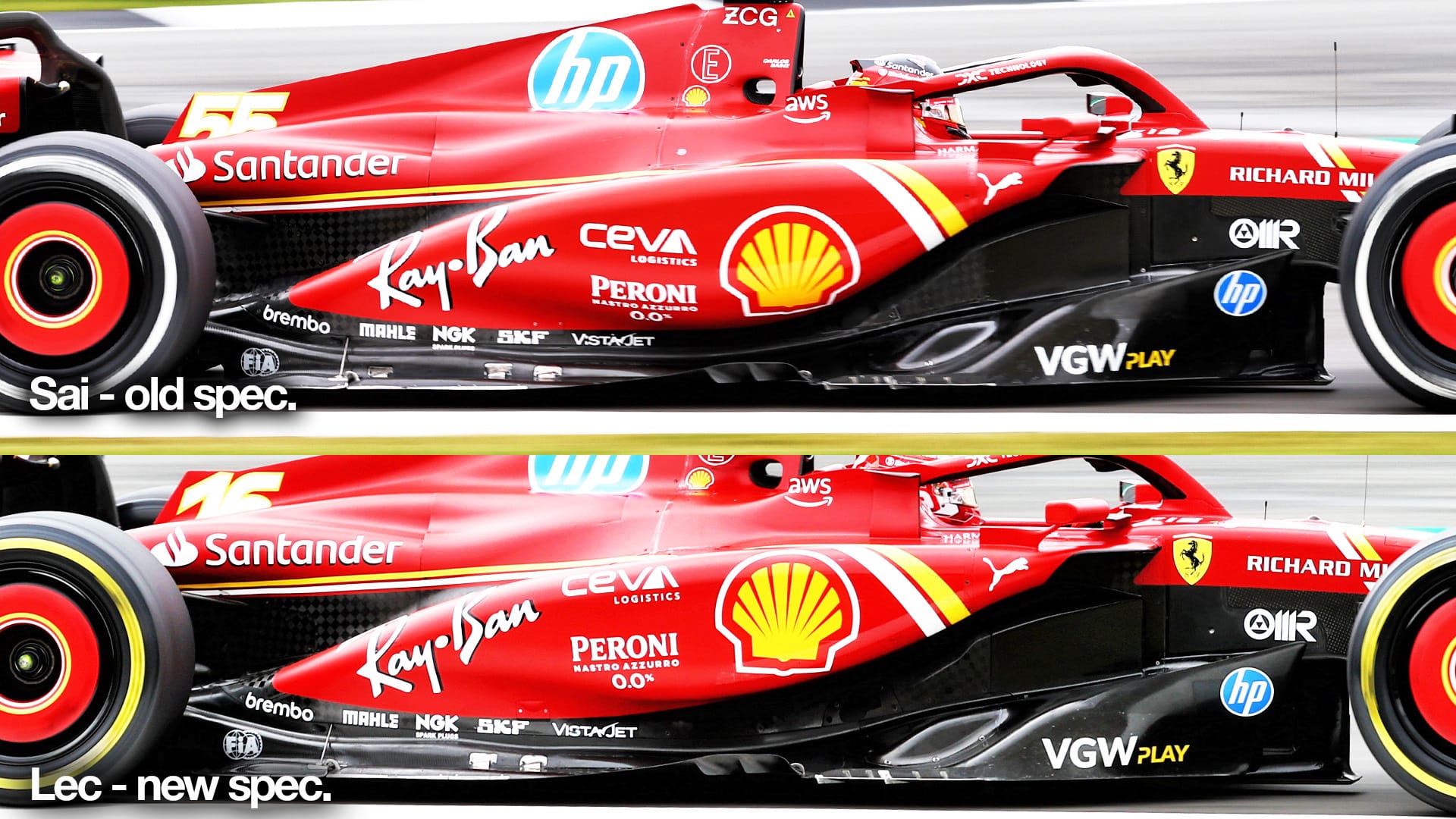
As Ferrari said in its declaration, the main developments are in the underfloor and diffuser so it’s impossible to see any of that from these side pictures. But when you lower the leading edge or the throat area of the underfloor, which Ferrari says it has done, it means there is less mass flow entering that area.
Increasing the diffuser suction means that the airflow under the throat of the floor has to travel faster to get from A (entry) to B (exit). And by asking that flow to do that, it will suffer more from separation problems.
Certain areas of the underfloor will be more critical than others and it is those areas that you need to pay attention to. The area of separation can be initially very small, but it can grow quickly. I always liken it to a light switch compared to a dimmer switch. If it’s very binary then the car will start moving vertically, which can very easily exaggerate the problem.
Ferrari seems to think the problem is worse when the car is under lateral load in the fast corners, so it stiffened the floor structure for Silverstone's high-speed corners. But that didn’t sort the problem.
One thing you do get is car jacking when the car is under lateral load. Depending upon the suspension geometry, lateral forces can jack the car up or down. It’s similar to anti-dive, anti-lift or anti-squat when the car has longitudinal forces on it from braking or accelerating.
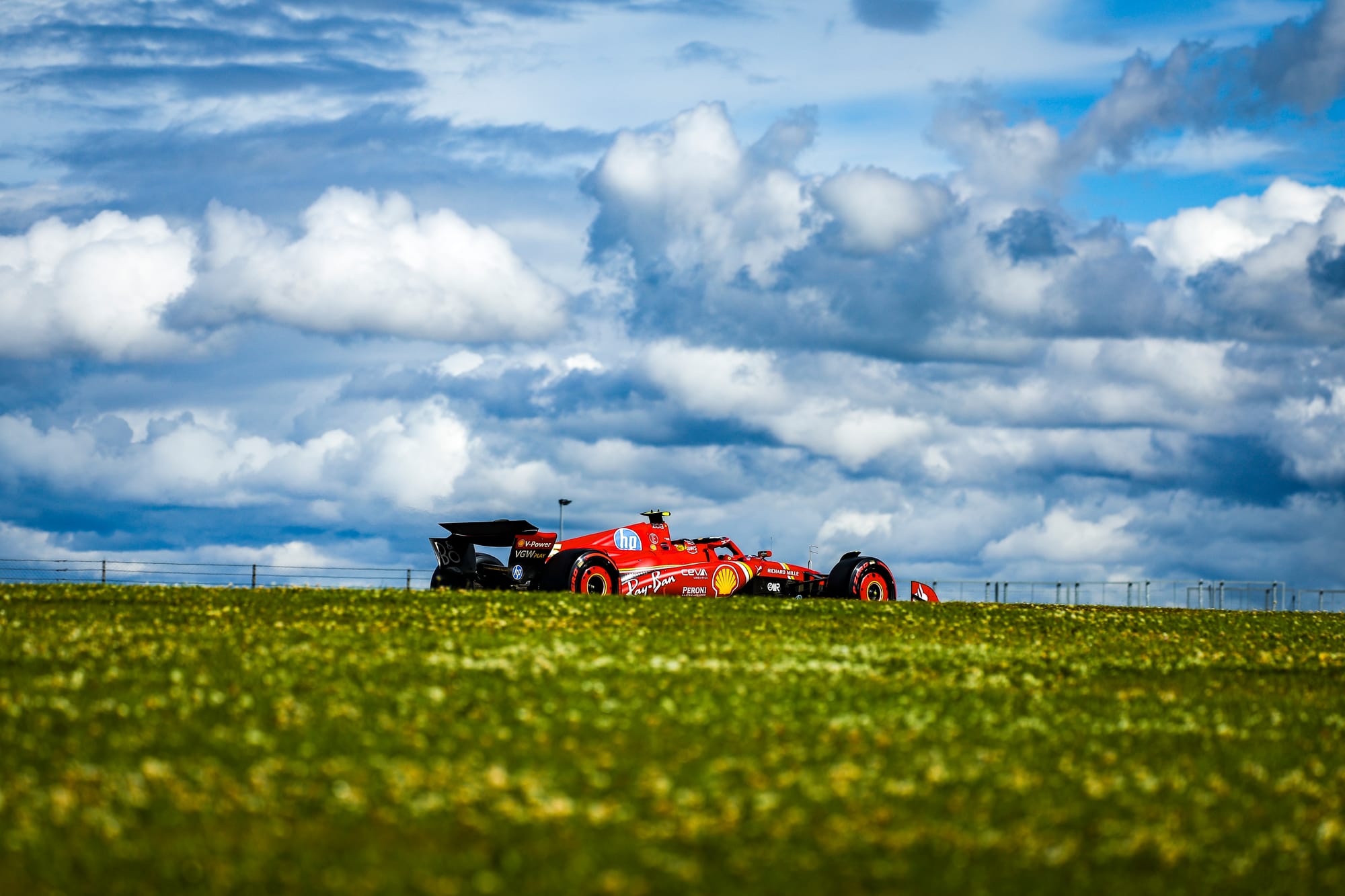
Without drawing out the actual suspension geometry in detail and trying to understand its jacking characteristics, it is impossible to say how much effect this would have. But if I was at Ferrari, it would definitely be something I would be looking very closely at.
After running both the Spain floor/bodywork package and the old-specification during Friday practice, Ferrari then decided to take a step back and put both Leclerc and Sainz onto the previous configuration for the rest of the weekend. That is always difficult, because when you’re going backwards you’re not going forwards and Ferrari probably paid the price for that because it was wet in FP3. This meant there was no time to get the best out of the altered specification in preparation for qualifying.
And you could see some tell-tale signs of bouncing from the cars even in the old specification, meaning this is an underlying problem that is on a knife-edge. It might require taking some more steps back to fully understand and fix.
As I always say, it is easy to fix most problems but first of all you need to understand them. Blind development will take you nowhere and you don’t always need to believe you are taking a step forward. Give the driver consistent downforce that they have confidence in and they will bring you more laptime than most developments will.

